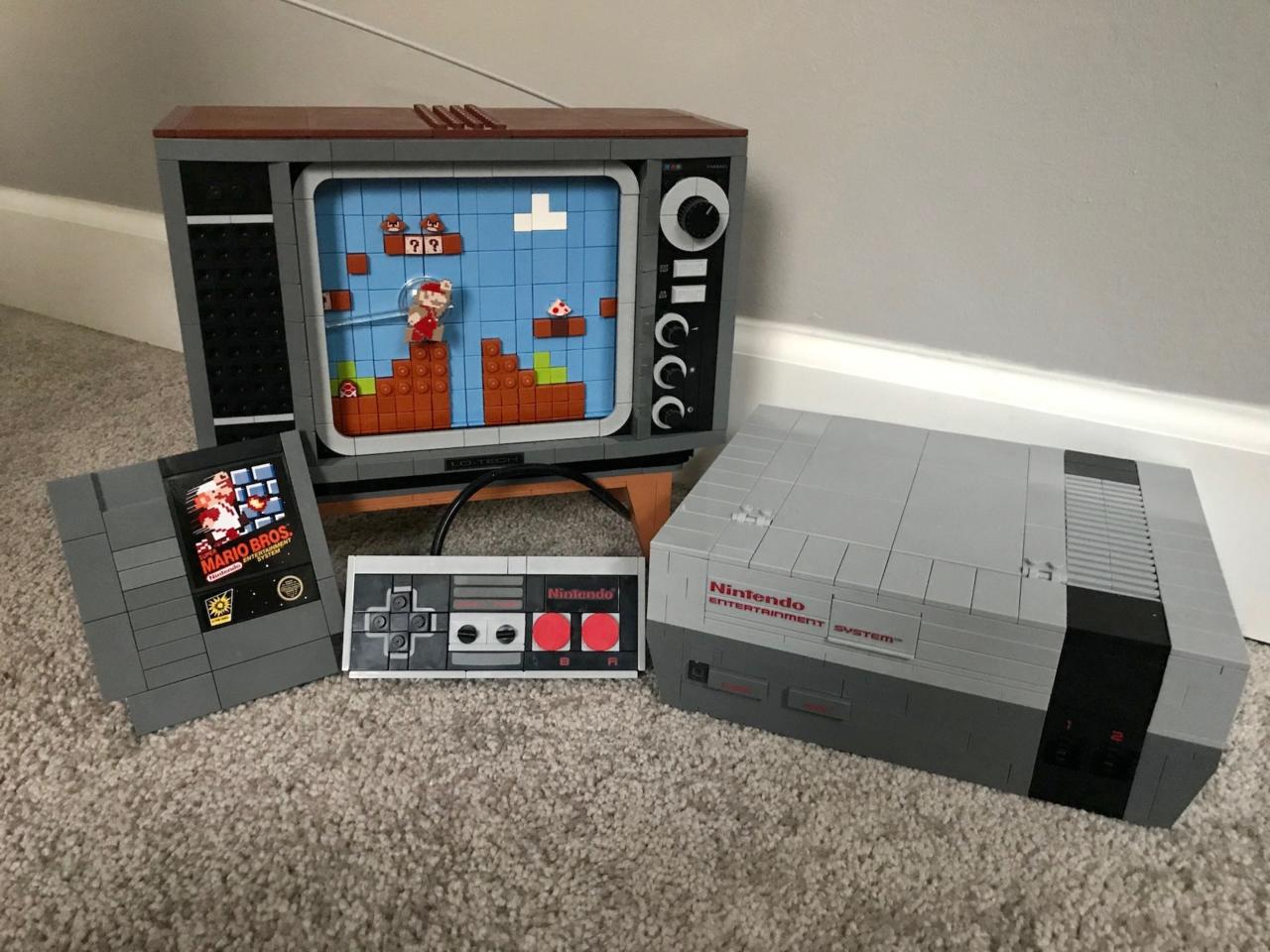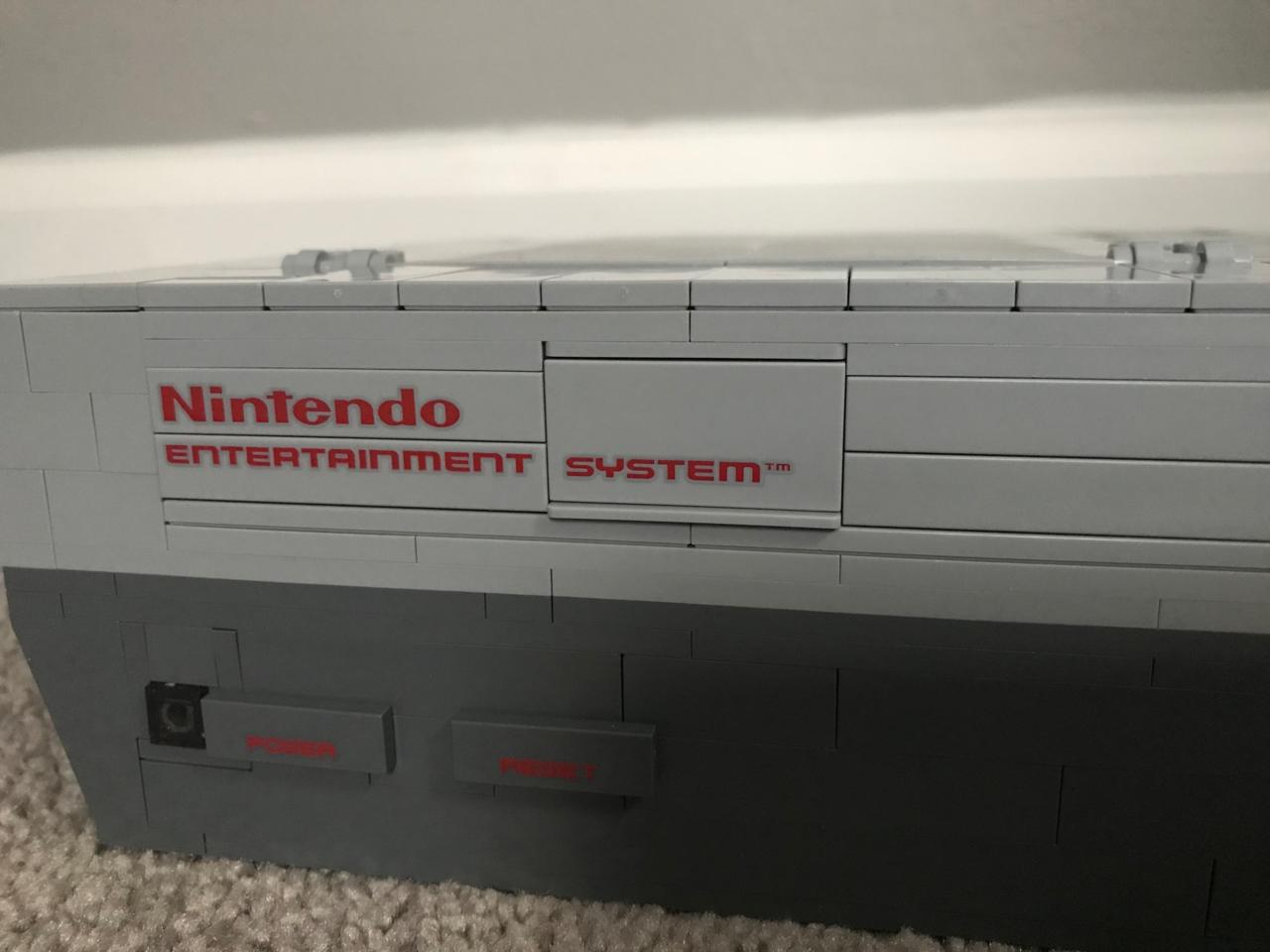Nearly 35 years after its release in the US, the Nintendo Entertainment System remains an integral part of video game history and one of the most iconic consoles ever made. As such, it's understandable that many have immense nostalgia for the system that rejuvenated the slumping gaming industry. Nostalgia fuels Lego's Nintendo Entertainment System set, one of the most impressive Lego kits ever produced. Days removed from building the Lego NES, I still find myself in awe that this kit exists. Ridiculously cool, extremely solid, and ingenious in its design, the Lego NES is a triumph in just about every respect.
The Nintendo Entertainment System is one of Lego's more advanced builds, coming in at 2,646 pieces, and it has an age recommendation of 18 or older. While I think it's certainly possible for kids to help build the Lego NES, it's an exceedingly detailed process that would probably be hard to follow if they were flying solo.

As with all big Lego kits, the box contains numbered bags with all of the bricks you'll need for each differentiated section. In the Lego NES' case, there are 21 different mini-builds, and some come with multiple bags of bricks. Inside the box, you'll also find two instruction books--these weighty tomes cannot be called booklets--each of which are more than 200 pages. One book covers the console, controller, and NES cartridge, while the other focuses on the CRT TV.
While the decision for two books was probably made out of practicality--a 450-page magazine-type book would be unwieldy and wouldn't hold up--it makes the kit ideal to build with a partner. At this stage of the pandemic lockdown, my wife and I are always looking for fresh new activities, and the Lego NES absolutely consumed us. It would've been challenging to build it together with one book, but with two sets of instructions for two totally different builds, we sat across from each other tinkering away happily for hours on end.
The CRT TV is a slightly more in-depth build, mainly because of the scrolling screen that requires you to place dozens upon dozens of little tiles across a makeshift panel to bring Super Mario Bros. World 1-1 to life with Goombas, Koopas, platforms, and more. When you add the stand and the actual TV into the mix, that build alone takes roughly five hours--and we moved at a pretty brisk pace.

The finished console may look like a mere box--just like the NES, of course--but it's a surprisingly intricate build, too. Lego did a remarkable job of making it feel like you’re actually constructing the system from the ground up. It uses a large variety of bricks and plates to make it add up to something substantial. Sometimes it wasn't clear exactly what I was working on, but then I slotted a new contraption into place, and it all came together. There's even a neat Easter Egg hidden inside the console that will probably make you gasp when you figure it out. The console also took around five hours to complete. Meanwhile, the controller and cartridge are far less intensive builds, with the controller taking roughly 20 minutes and the cartridge taking no more than 15 minutes to put together.
The illustrated instructions are mostly great and easy to follow, offering a primarily visual blueprint for all four builds. There were a few instances where I had to go back because I missed some minor detail. Though each page has diagrams and pictures of required pieces, you have to look closely to know exactly where they go. If you don't examine the full page with an attentive eye, it's easy to place a brick just one notch off. But we didn't run into any snags with the instructions that lasted more than a few minutes. Each of the builds is incredibly sturdy and well-designed, so it would be a tall task to take it apart and rebuild, especially since you wouldn't have all of the bricks neatly organized.
Once it's built, the Lego NES becomes a gorgeous model to display prominently on your shelf, but it also has cool elements of interactivity. The controller, of course, plugs into the console. The cartridge deck opens, and you can actually slot the Super Mario Bros. cart into place as if you were loading a real game. The CRT TV has rotating dials, including a channel tuner that makes those glorious clicking noises when turned, and an antenna that you can move around to pretend you're getting rid of static. Banging your hand on the side of the TV does nothing, despite what your father used to believe.

The coolest feature is undoubtedly the rotating screen. Using a crank on the side of the faux wood panel TV to turn the gears inside, the screen cycles through the level. And 8-bit Mario, who is essentially attached to a stick and elevated to provide depth, hops over gaps and crushes Goombas. It's a feat in design that this works without a hitch, and I'm sure I will be showing this off for years to come.
Unfortunately, I wasn't able to test Lego Super Mario with the Lego NES for this review. If you place Mario from the Adventures with Mario Starter Course on the top of the TV, he'll react to the action on screen with coin and enemy bopping sounds, which sounds like a neat way to connect the Lego NES with the Lego Super Mario series.
The Lego NES is a superb kit that makes me thoroughly excited for this new partnership between Nintendo and Lego. It's a complicated, though approachable, build that when put together is perhaps the most charming Lego kit to date. Though the price is high at $230, the level of detail here and finished product lives up to the cost. It's available August 1 at the Lego Store alongside Lego Super Mario and its 10 expansions.
The products discussed here were independently chosen by our editors. GameSpot may get a share of the revenue if you buy anything featured on our site.











